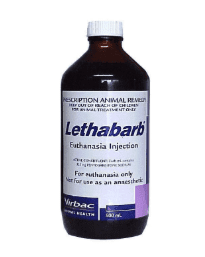CHAPTER THIRTEEN
Putting animals down: euthanasia
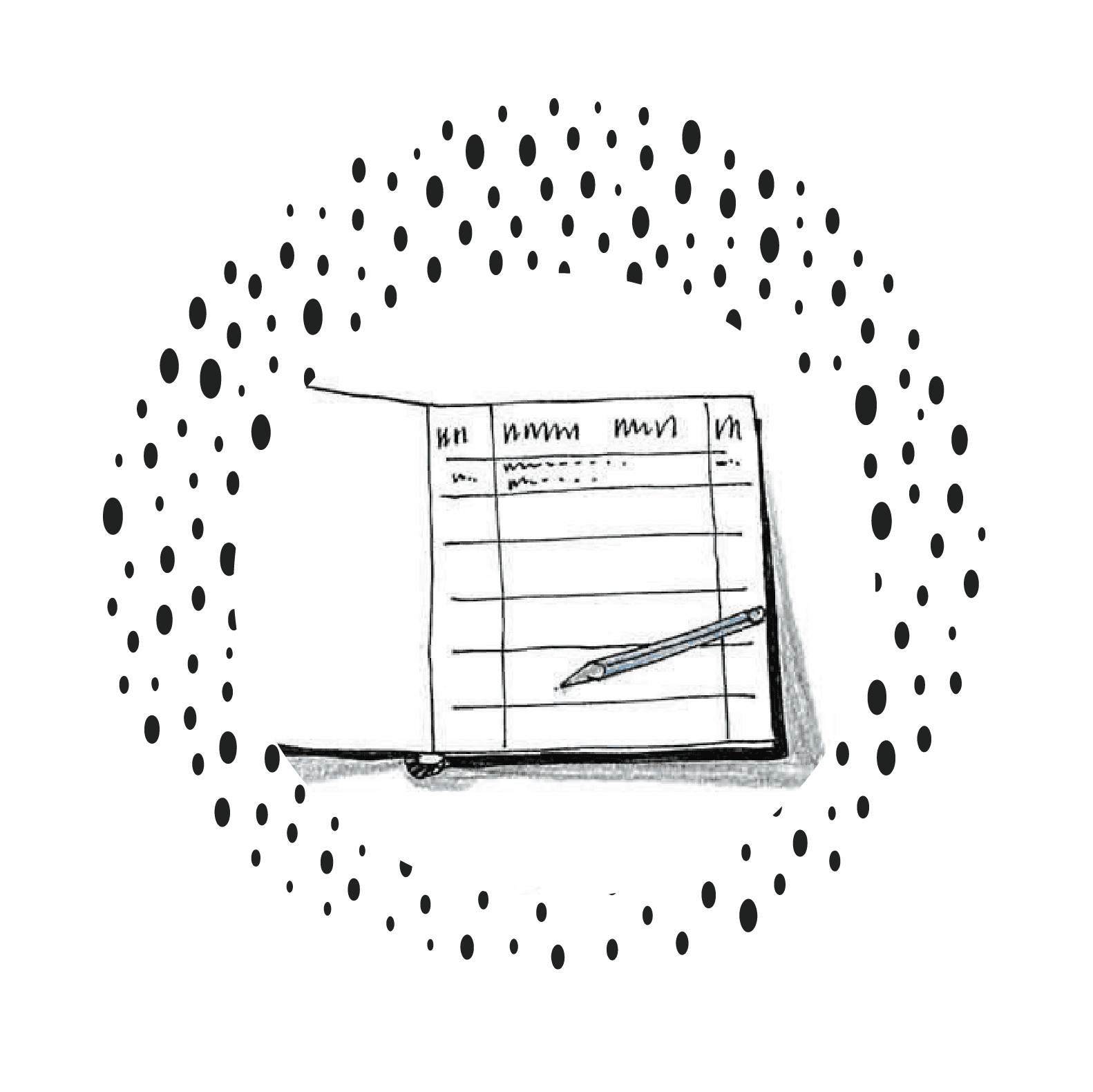
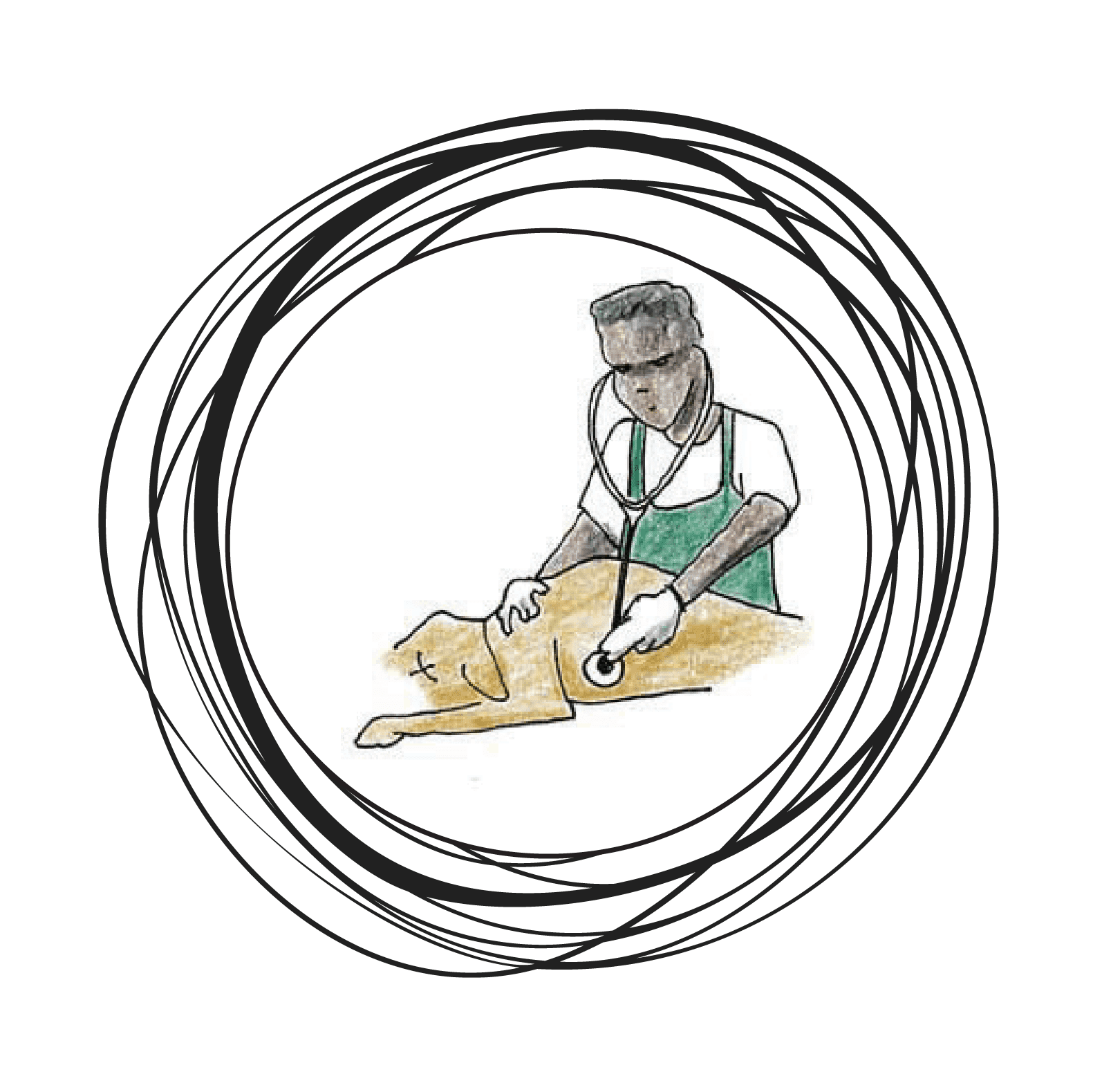
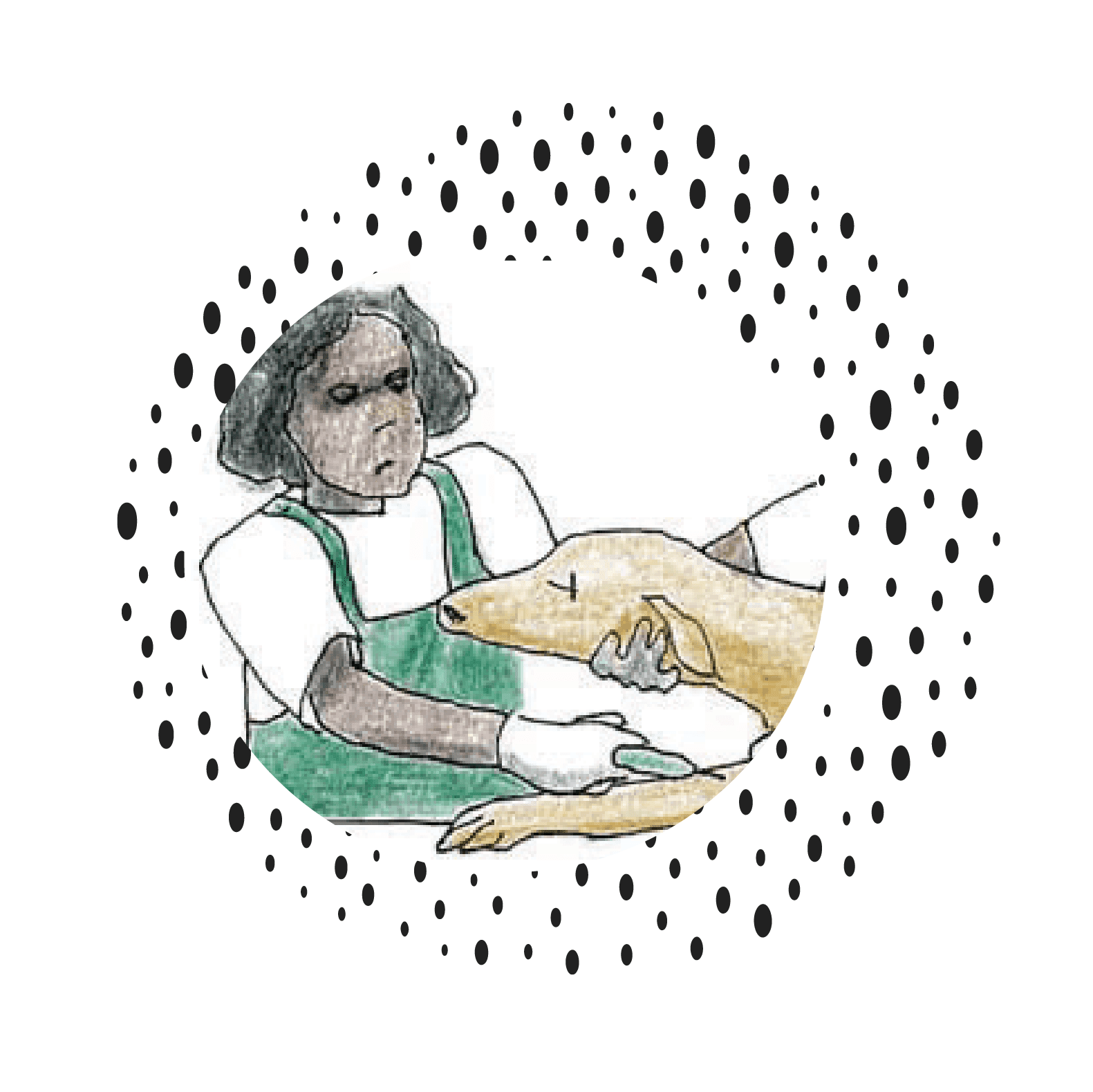
What is Euthanasia?
‘Euthanasia’ is the word vets use to describe the process of permanently putting an animal to sleep.
Euthanasia is a scientific term which means ‘good death’.
When we put an animal to sleep, we ‘euthanase’, or are ‘euthanasing’ the animal. Once the animal is dead, we say it has been ‘euthanased’.
When people are talking about euthanasing an animal, they might say:
-
- putting them down
- finishing them up
- putting them to sleep
- making them pass away
- killing them
- giving them the green dream
- sending them to heaven
These are all different ways of saying that they are going to euthanase the animal.
Euthanasing animals can impact people’s mental health
Euthanasia can be an emotional and complicated topic.
For an animal that is suffering and cannot be fixed by other treatments, euthanasia might be the kindest option.
But some people aren’t comfortable with euthanasia. They might not be ready to say goodbye to their pet, or their religious, spiritual or cultural beliefs might not agree with ending an animal’s life. Some owners might want their animal to die naturally.
Euthanasing animals can cause sadness for the animal owner, the person euthanasing the animal, and the community.
Because it is such an emotional topic, any time an animal needs to be euthanased, it’s important that everyone understands why the animal is being euthanased.
Some people might want to talk about it in a group. Other people might want to talk to the vet or EHP privately. As the EHP, you can talk to your community to find out how people want to talk about euthanasia of animals.
It’s also important to be aware of everyone’s mental health. If euthanasing animals is causing anyone to have mental health problems, talk to people like the vet, management, elders, Traditional Owners and the health clinic.
Reasons for euthanasing animals
1. If an animal is badly injured or very sick.
If an animal is very sick or injured, and is suffering badly, the kindest thing to do might be to euthanase the animal.
Always talk to your vet to confirm that euthanasia is the right decision for animals that are badly injured or very sick.
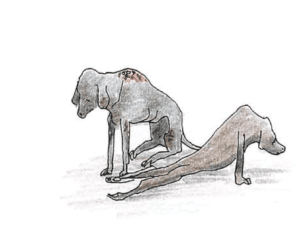
2. If an animal is causing trouble in the community.
When an animal is causing serious trouble that threatens the health or safety of people, it might be best to euthanase the animal.
An example of this is dogs that bite people.
The decision to euthanase animals that are causing trouble can be complicated, especially if the community doesn’t have laws about these things.
Some communities have laws that make rules about pets in the community. These are called by-laws. You can read more about by-laws in the next chapter.
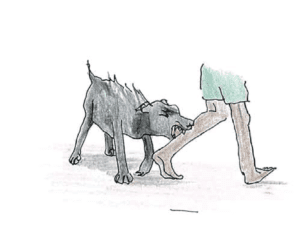
3. If the animal has no owner or is unwanted
If a community does not have a good animal health and management program, they may have more dogs and cats than they want.
The community may want to get rid of some dogs or cats, and then stop the others from breeding.
For some communities, euthanasia might be the only option for these unowned or unwanted dogs.
In some areas, instead of euthanasia, the community might be able to work with an animal rehoming group, and have the unowned or unwanted animals rehomed to towns or cities.
As the EHP, you can talk to your vet or AMRRIC about whether or not working with animal rehoming groups might be an option for unowned or unwanted pets in your community.
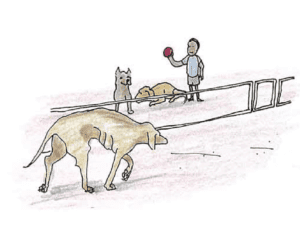
4. If the animal is a feral dog or cat that has moved into a community area
Feral dogs and cats are wild animals that can be a safety risk for the community, pets and local wildlife.
They can come into areas like the dump, looking for food.
In the long term, the community should look at fencing the dump to stop wild animals getting in.
In the short term, trapping and euthanasing wild dogs and cats might be the best option.
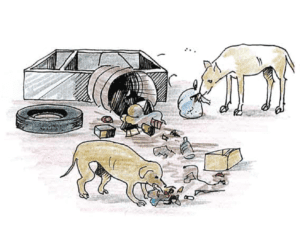
Did you know?
In the past, killing dogs was the main way of population control in many communities.
BUT! Killing dogs to control the population doesn’t work in the long term, and doesn’t help much with environmental health problems like zoonotic diseases.
Killing dogs is also not nice for the community to witness or a nice job for the EHP.
Killing dog or cats as way of population control can also make people treat animals badly – when people see animals being killed all the time, it makes it hard to love and respect the animals.
Running an animal health and management program is a much better way to control pet populations in a community.
Things to think about when euthanasing animals
Which method?
There are different ways animals can be euthanased. Which method is used will depend on:
-
- what the community are comfortable with,
- who is available to euthanase the animal, and what training they have, and
- the reason the animal is being euthanased.
You can read more about the different methods of euthanasia later in this chapter.
Who should be there?
Whichever method is used, it is important to think about how the community might feel about watching the euthanasia.
It can be ok for owners to be there when an animal is euthanased with a lethal injection, but it is not nice for community members to watch an animal die by shooting or captive bolt.
If the EHP is putting a pet to sleep by a lethal injection, it is important to talk to the owner and find out if they want to watch the euthanasia.
If an owner doesn’t ask to watch when an animal is euthanased, it is usually better if the EHP can take the animal away, and euthanase them in a quiet place away from the owner, other people and other animals.
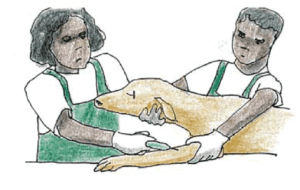
Staying safe
If the animal has been injured, it will probably be in pain. Anyone handling the animal needs to be extra careful because the animal might try to bite because of its pain.
See chapter 15 for how to safely hold dogs, and place muzzles around their mouths to stop people from getting bitten.
Giving sedation before euthanasia
Giving sedation before all types of euthanasia is the nicest way for the EHP and the animal.
This can be done easily by hiding sedation tablets in some food or by giving a sedative injection under the skin.
The animal will then be sleepy from the sedation and will lie still for euthanasia.
Sedatives that might be used to sedate animals before euthanasia include:
-
- Acepromazine tablets
- Medetomidine (Domitor®)
- Tiletamine+Zolazepam (Zoletil® )
These sedatives are S4 drugs, so the EHP will need training from a vet and authorisation from the Department of Health to use them. They also need to be locked away in a safe location. S4 medicines are Schedule 4 medicines that can only be given under the direction of a veterinarian. Chapter 2 has more information about getting authorised to use S4 medicines.
Talk to your vet about whether giving sedatives might be a good option to help with euthanasing animals in your community.
Recording Keeping
It is important to keep good records of all animals that are euthanased. This way, if there are any complaints about a euthanasia, there are records to back you up.
If the animal is owned, it is a good idea to get the owner to fill out a form that says that they give their permission for the animal to be euthanased.
Even if the animal doesn’t have an owner, it is still a good idea to fill out a euthanasia form for every animal that is euthanased.
If the animal is sick or injured, take photos of their sickness or injuries and send these to your vet. You can then describe the sickness or injuries on the euthanasia form, or attach the photos to the form. You should also record on the euthanasia form, any advice that was given by the vet.
It is especially important to keep good records if the animal has to be euthanased when its owner can’t be contacted.
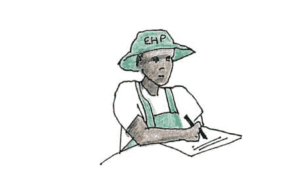
Euthanasing animals by lethal injection
Animals can be euthanased by giving them a lethal injection (needle). If it is done well, this is a very peaceful way of euthanasing animals.
Only vets, or EHPs who been trained and authorised can euthanase animals by giving a lethal injection.
The medicine used in the injection is called Pentobarbital sodium. The brand name on the bottles can be Lethabarb, Euthal, Valabarb or Pentobarb. All of the bottles have the word “euthanasia” written on them.
It is sometimes called the “green dream” because the medicine has a green dye in it. This is to make it stand out so it cannot be given by mistake.
Sometimes the medicine is dyed purple or blue instead of green.
How does a lethal injection work?
The medicine works like an overdose of anaesthetic.
The animal feels like it is going to sleep for an operation, but it does not wake up because the dose of the sleeping medicine is too big.
The medicine works very quickly. It takes about 5 seconds for the animal to fall asleep after the medicine goes into the vein. The animal usually dies in less than one minute.
The medicine works by stopping the lungs from breathing and the heart from pumping. The animal is already asleep before this happens.
The most common way to use the medicine is to inject it into the vein on the animal’s front leg.
What problems might we see when giving a lethal injection?
-
- Sometimes the animal may not like being held for the needle. They may fight and try to scratch or bite the person who is holding them.
- Sometimes some of the medicine can go under the skin and not into the vein; this stings! The animal will scream try to get away if this happens.
- If not enough medicine is given, or it is given too slowly the animal can freak out. They may howl and look like they are having a fit. If this happens it can be hard to get the rest of the medicine into the animal.
- Animals sometimes take a minute or so to stop breathing. In this time, they can look like they are gasping for air. The animal is not awake when this is happening and they cannot feel it, but it can scare anyone that is watching.
- Even when an animal is dead it may make a noise when it is first moved. This is just the air leaving their lungs, but it can also be scary for people who are watching.
If the owner is going to be there when the animal is given a lethal injection, it is a good idea to warn them about these things. Remind the owner that once the animal gets the medicine, it is asleep and cannot feel anything.
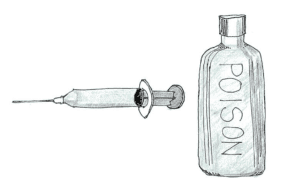
What does a community need to use this medicine?
1. Trained people.
Only a vet or a trained and authorised person can give this medicine. It is an S4 medicine.
An EHP giving this medicine needs a lot of training and practice to be sure they can get the injection in the vein properly.
2. Safe lockable storage.
This medicine is dangerous and can kill people; a dose used to kill a dog could kill a child.
It MUST be stored in a safe location, in a secure, lockable container.
Because this medicine is so dangerous, most health clinics are not happy to store it with their human medicines.
Many communities do not want this medicine in the community at all. They do not trust the storage places to be safe enough.
For these communities, other methods of euthanasia may be the only option.
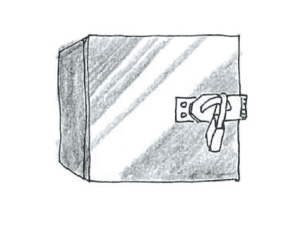
3. A record book
It is very important to keep good records for all animals that are euthanased.
The records need to show:
-
- the name and type (e.g. dog, or cat) of each animal euthanased,
- the date, time and location where each animal was euthanased,
- how much medicine each animal was given, and
- how much medicine is left in the bottle.
Keeping a record book is a requirement of a trained EHP’s medicine authorisation. This record book needs to be kept safe. The Department of Health might want to see it and make sure it is correct.
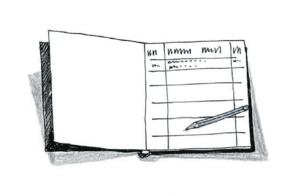
4. A deep grave
The lethal injection medicine stays in the animal’s body for a long time after it is dead.
If another animal eats the body of an animal euthanased by a lethal injection, they can die too.
Animals euthanased with a lethal injection need to be buried in a deep grave at least 1m deep. They should be buried on the same day they are euthanased so that other animals don’t get into their body before it is buried.
Euthanasing animals by shooting them
Animals can be euthanased using a gun.
Shooting animals using a gun can be gruesome. It is important that when animals are shot, this happens away from view of the community.
To kill animals by shooting them, the EHP will need:
-
- training in gun safety and shooting animals
- a rifle license
- a gun safe
- an ammunition safe
If the EHP doesn’t have these things, the police or rangers might be able to shoot the animal instead.
It is always much better to give the animal a sedative before it is shot. This will make it safer for the people doing the job and more peaceful for the animal. See chapter 2 for more information about getting authorised to give sedatives and other S4 medicines.
When shooting an animal, it always better to use a head shot than a heart or lung shot. The shooter should aim for the animal’s brain.
Talk to your vet, management or AMRRIC, if you think shooting animals might be an option for animal euthanasia in your community.
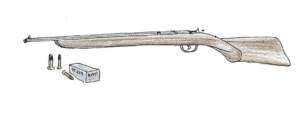
Euthanasing animals by captive bolt gun
With training, EHPs can use captive bolt guns to put down animals.
Captive bolt guns are usually only used in communities where lethal injection or shooting animals are not options for euthanasia.
Captive bolt guns have a large steel hammer which fires into the head of the animal when the trigger is pulled.
This is how animals like cattle and sheep are killed in most meat works.
The EHPs will need formal training in the use of the captive bolt gun.
Some EHPs do not like this way of putting down dogs because it is gruesome.
Talk to your vet, management or AMRRIC, if you think using a captive bolt gun to euthanase animals might be an option for your community.
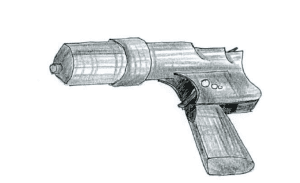
Euthanasing animals by poison baits
There is a poison bait called ‘PAPP’ (sold as ‘Dogabait’) that land managers can use to kill wild dogs.
This bait is poisonous to any dog, no matter if they are wild or pets.
PAPP causes dogs to die in a much nicer way than older baits like 1080 or Strychnine.
In some cases, this bait might be a good option for euthanasia of dogs in communities.
The use of poison baits is heavily regulated. Anyone wanting to use this bait has to apply for a permit, and must meet certain requirements.
Talk to your vet or AMRRIC to see if PAPP poison baits might be an option for the euthanasia of dogs in your community.
